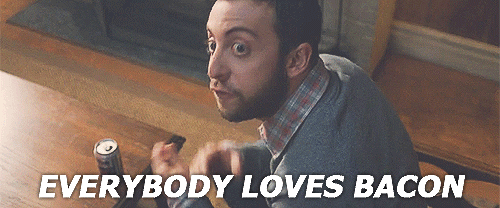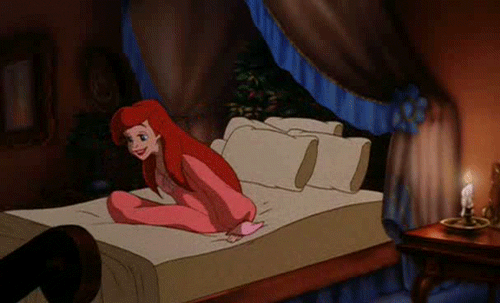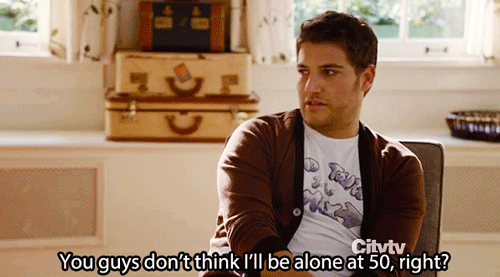So you want to buy a sex toy, but you’re a little unfamiliar with the process. You’ve heard of vibrators and strap-ons, but you don’t really know the difference, and you don’t exactly know where to start. Sex toys are so personal and there is such a wide variety available that it’s impossible to cover everything. But we’re dedicated to giving you a basic guide to sex toys for queer women, so that you know how and where to start looking even if you’re inexperienced.
Where to find sex toys
There are plenty places where you can purchase sex toys, including online at Amazon or a specialty shop, at a local Spencer’s Gifts, in sex toy shops and through sex toy party companies such as Pure Romance.
Depending on your location, there are probably local sex toy stores that mainly focus on selling items for sexual pleasure, for both individuals and couples. Good Vibrations is a sex toy chain that also has a website, so if there isn’t a location close to you, you can still purchase online.
What can you expect when you go into a sex toy store to shop?
The staff are used to people asking questions and are generally willing to help you find what you’re looking for, but they’ll also leave you alone if you just want to browse. They won’t make you feel awkward or judge your choices.
“It was much better than buying sex toys at places that don’t cater [only] to sex toys,” says Emily*, a recent graduate of Emerson College, about her experience with sex toy shops. “The only reason to be in there was to shop for sex, so it wasn’t nearly as embarrassing.”
Angela*, a senior at Westfield State University, admits that it can be hard to shop in a sex toy store the first time, but this is how she prefers to shop for sex toys. “It feels strange but both times I forced myself to be extra confident and nonchalant because I think that's how it should be,” she says. “We're too shameful about sex and our sexuality, women in particular.”
What if you prefer to buy online?
Additionally, you can find sex toys online, especially if you don’t need someone to answer your questions in person, and you feel you have done enough research to know what to look for—or if you're simply too embarassed to try out a sex toy shop at the moment.
Other than Good Vibrations, there’s also Jack and Jill, Liberator, and She Bop, which is a very female-positive store for all body types. Smitten Kitten and Babeland also offer a wide variety and are LGBTQ+-inclusive. Google is your best friend in this case, because it can lead you to all online storefronts that specialize in sex toys, as well as stores that sell them as only a part of their inventory, like Amazon.
What kinds of toys exist, and what do they do?
There are too many variations and types of sex toys that exist to name them all, but queer ladies often use vibrators, dildos, strap-ons (which is a harness used in conjunction with a vibrator or dildo), vibrating rings, lube and miscellaneous toys, such as handcuffs, blindfolds, ticklers and more.
Dildos
Dildos are essentially meant to pleasure a woman who wants to be penetrated. Unlike vibrators, which vibrate (obviously), dildos tend to stand on their own. They can also be used with strap-on harnesses that one partner wears. You can also find double-ended dildos for situations where both partners want penetration at the same time.
“Dildos can reach places a hand may not be able to,” says Angela, who often uses a jackrabbit style vibrator, which is designed for both internal pleasure and G-spot stimulation simultaneously.
Vibrators
Vibrators are often used for a lady who wants to be penetrated, but can also be used for clitoral stimulation. They come in a wide variety of shapes and sizes, each with a specific intent. Some are meant to be larger, while others are more focused on pleasuring the G spot. You can also find vibrators (and dildos) that are designed for anal penetration specifically, if that’s something you want to try.
![]()
Toys for Miscellaneous Use
In addition, there are also vibrating rings that can be worn on fingers for sexual stimulation, along with sex toys that are designed to set a mood rather than for direct stimulation. Handcuffs, blindfolds and ticklers all fall under this category.
“Are you into super soft touches?” asks Dannielle Owens-Reid, the co-founder and CEO of Radimo, a collective of writers that is launching a new gender-neutral clothing line. “Try a tickler. Are you into being scared? Blindfold yourself and have your partner be completely silent, so you have no idea when something is going to happen.”
Many sex toys are more about the mood that’s being created between the people using them than anything else. “I like handcuffs because you can be either dominant or submissive, and it’s more clear who has what role,” says Ashley*, a senior at Johns Hopkins University. “It’s great for sexual teasing and foreplay, because you have control over the other person if they’re in handcuffs.”
Variations on vibrators, such as remote-controlled vibrating underwear, can also be a great experience if you’re into control play with your partner. “I’ve never tried it in public because I’m too nervous,” says Holly*, a recent graduate of Johnson and Wales University. “We have the one that has a ring and [my partner] can control it, but I’m too scared to take it out of the house.”
There’s more to sex toys than just their basic functions—and that makes experimenting even more exciting, whether you’re doing so alone or with a partner.
Who can use vibrators and dildos?
The great thing about vibrators and dildos is that they aren’t inherently gendered. Although this is a guide aimed at queer women, it doesn’t matter what your sex and gender identity are—anyone can use a vibrator or a dildo if they want, when they want, with no gender role expectations attached. Many people think that vibrators and dildos are supposed to "take the place" of a penis, but this isn't true. Two women can enjoy the use of a vibe or a dildo without one person taking the role of the man. Many opposite sex and same-sex male couples use vibrators and dildos in sex play as well.
Owens-Reid says that sex toys are a useful for more than just their basic functions, but also their place in the overall experience. “I think sex toys are more than just the toy itself,” says Owens-Reid. “There's an entire mood shift once you're including something other than just two humans.”
You can also purchase a harness, often referred to as a “strap-on,” to use along with a vibrator or dildo. Owens-Reid recommends Spare Parts harnesses and warns that nylon harnesses tend to be looser and not inclusive of all body types.
Are sex toys safe?
Christina Spaccavento, a sex therapist and relationship specialist, warns people to take caution when it comes to safety and sex toys. “Always remember that when purchasing sex toys they must be non-toxic and phalate-free,” she says, “and when using lubricants, water-based is best.” Using silicone lube on silicone toys can wear them down and make the sex toy more prone to passing diseases and STIs.
It’s important to know what kind of lubes work with the sex toys you’re buying, as well, and to take care of your toys—wash them regularly according to the included instructions. If you’re using them with multiple partners, you can also use condoms to protect dildos and vibrators from spreading STIs and general bacteria.
How do you choose a sex toy?
Making decisions about what sex toys to buy can be daunting, especially if you don’t have much experience, or any at all.“I would take note of the things you like when you're not including toys and see what is super close in the store,” Owens-Reid suggest.
If you notice that you’re a huge fan of G-spot stimulation on your own or with a partner, look out for a dildo or vibrator that’s designed for that. You can try to get a sense for what pleases and excites you. You can also do research, and read or watch video reviews of sex toys you’re considering buying. You can look for video reviews on YouTube.
It’s also a great idea to start simple and go from there, especially if you’re new to using sex toys. “I recommend exploring the different toys that are available by starting with the more simple options, for example, a small palm-sized vibrator and a dildo,” Spaccavento says. “Once you feel comfortable with the simpler options you can then move on to more complex or specific toys.”
If you’re afraid of buying a toy you don’t like, don’t worry so much. Many people find themselves unsatisfied with a toy, but think of it as a learning experience. “Don't feel bad if it doesn't work out. It was not a waste of money,” says Owens-Reid. “You're talking about sex that you're going to have for the rest of your life. If you try a toy and find out you hate it, that is a great thing to know.”
Emily’s first experience buying a vibrator wasn’t what she expected. “I was too embarrassed to really look at all the options, so I picked the simplest one,” she says. “I learned what specifically I didn’t like and my first experience also kind of got rid of some of the embarrassment associated with sex toy shopping.”
There’s nothing wrong with trial and error when it comes to shopping for sex toys. You’ll find out what works for you—and for your partner, if you have one—soon enough. There’s no way to find out unless you experiment!




















































































































